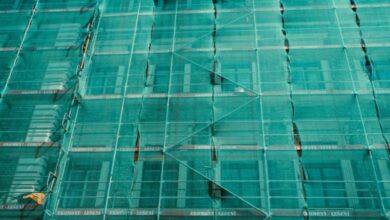Breaking Barriers: Pushing the Limits of Thickness with High-Power Fiber Laser Cutting

In the dynamic realm of metallic fabrication, the pursuit of precision and performance has led to the development of contemporary technology. High-electricity fiber laser reducing machines have emerged as a transformative force, pushing the conventional boundaries of fabric thickness and beginning new opportunities within the world of metallic fabrication.
This article explores how high-energy fiber laser reduction is breaking barriers, enabling the processing of thicker and extra robust materials than ever earlier than.
Introduction to High-Power Fiber Laser Cutting
High-power fiber laser reduction is an era that makes use of a concentrated beam of mild generated through high-strength fiber lasers to reduce thru diverse materials, with first-rate precision and velocity.
Unlike traditional reducing strategies, excessive-power fiber laser reducing machines excel in offering a contactless and efficient solution for a wide range of substances, including metals of different thicknesses.
The Evolution of Laser Cutting Technology
Laser reducing generation has gone through significant evolution over time, with advancements in energy and manipulate structures. High-energy fiber lasers, particularly, have become a game-changer in metallic fabrication.
These lasers generate excessive beams of light through fiber optics, providing exquisite degrees of energy and manage for specific slicing across various substances.
Traditional Constraints in Material Thickness
Traditional slicing techniques, such as mechanical slicing or plasma reducing, often face obstacles with regards to processing thicker substances. These techniques may also warfare with attaining the essential precision or may be sluggish and inefficient while coping with sturdy metal sheets. High-strength fiber laser reducing addresses these boundaries by providing a powerful and focused beam capable of effortlessly slicing via thicker materials.
Understanding High-Power Fiber Laser Cutting Machines
1. Power and Precision
High-energy fiber laser slicing machines are characterized by their potential to supply a focused beam of high-energy mild. The depth of this beam allows for precision slicing even in substances with widespread thickness. The focused strength guarantees that the cloth is vaporized or melted alongside the cutting direction, resulting in smooth and precise edges.
2. Variable Power Settings
One of the key advantages of excessive-electricity fiber lasers is their flexibility in adjusting power settings. This adaptability is critical whilst running with substances of various thicknesses. The operator can high-quality-song the electricity levels to obtain ideal cutting conditions, making sure a smooth and efficient manner regardless of cloth density.
3. Increased Speed of Cutting
The excessive-power output of fiber lasers translates into accelerated cutting speeds. This is especially effective whilst dealing with thicker substances, where conventional methods may warfare with gradual cutting costs. High-velocity slicing no longer most effectively complements productiveness; however , it also contributes to price-effectiveness in large-scale manufacturing operations.
Applications in Breaking Thickness Barriers
The ability of high-electricity fiber laser reducing machines to deal with thicker materials has huge applications across various industries:
1. Heavy Machinery Components
In the production of heavy equipment, wherein robust components are critical, excessive-electricity fiber laser reducing machines excel. The era permits for the appropriate reduction of thick metal sheets, contributing to the manufacturing of long lasting and dependable machinery additives.
2. Shipbuilding and Offshore Structures
Shipbuilding and offshore industries demand substances able to withstand harsh maritime conditions. High-electricity fiber laser slicing machines facilitate the processing of thick metal plates for ship hulls, decks, and offshore systems, making sure structural integrity and toughness.
3. Construction and Infrastructure Development
In the construction area, where structural components require various thicknesses, excessive-power fiber laser cutting is instrumental. From thick beams and columns to specialized additives, the generation supports the green fabrication of materials for various creation initiatives.
4. Defense and Aerospace Components
The defense and aerospace industries call for precision and sturdiness in their components. High-power fiber laser reducing machines play a pivotal position in crafting thick metal components for aircraft, missiles, and defense systems, contributing to the advancement of aerospace generation.
5. Energy Sector Equipment
In the energy quarter, especially inside the manufacturing of electricity era equipment, high-power fiber laser reduction ensures the precision fabrication of thick metallic components. This includes turbine parts, structural factors for electricity plant life, and different crucial components.
Benefits of Breaking Thickness Barriers
1. Precision in Complex Geometries
The ability to cut through thicker substances does no longer compromise precision. High-electricity fiber laser slicing machines excel in retaining accuracy even in complicated geometries, taking into consideration the introduction of complex and distinct additives.
2. Reduced Material Waste
By optimizing the reducing system for thicker materials, excessive-electricity fiber lasers contribute to reduced fabric waste. The precision of the cut and the power in adjusting strength settings decrease the margin of errors, ensuring that each reduction is optimized for fabric usage.
3. Faster Time-to-Market
In industries in which time is of the essence, including aerospace and automobile manufacturing, the multiplied cutting velocity of high-electricity fiber laser slicing machines interprets into quicker manufacturing cycles. This fast turnaround time is critical for assembly market needs and staying aggressive.
4. Cost-Effectiveness in Large-Scale Production
The mixture of pace and precision in high-strength fiber laser cutting ends in price-effectiveness, in particular in big-scale production. Manufacturers gain from reduced production instances, decrease power intake in keeping with elements, and minimize fabric waste, contributing to basic fee savings.
Challenges and Considerations in Breaking Thickness Barriers
While high-electricity fiber laser reducing gives exceptional blessings in breaking thickness obstacles, certain challenges and considerations need to be taken into account:
1. Equipment Investment
Acquiring high-strength fiber laser reducing machines capable of managing thicker substances may involve a higher initial funding. However, the lengthy-time period blessings in terms of increased skills, efficiency, and versatility often outweigh the upfront prices.
2. Material Variability
Different metals show off various responses to laser cutting. Manufacturers ought to not forget the precise homes of the materials they work with, together with conductivity and reflectivity, to optimize cutting parameters for optimal outcomes.
3. Heat Management
Thicker substances require more energy to reduce, mainly due to accelerated heat technology. Managing the warmth successfully to save you cloth distortion or unwanted effects on the reduced edges is critical for preserving fine and precision.
Future Trends and Innovations in High-Power Fiber Laser Cutting
As technology maintains to enhance, several trends and improvements are shaping the future of high-energy fiber laser slicing:
1. Integration with Automation
The integration of high-power fiber laser slicing machines with automation and robotics is a developing trend. This complements the overall efficiency by means of reducing manual intervention, growing throughput, and improving the consistency of the cutting process.
2. Enhanced Cooling Systems
Innovations in cooling systems for high-electricity fiber lasers are emerging to cope with the challenges related to warmness technology. Improved cooling technology aims to decorate the precision and great cuts, specially in thicker materials.
3. Intelligent Monitoring and Control
Advancements in sensible tracking and management systems provide actual-time feedback at the reducing system. This permits operators to make instantaneous adjustments, optimizing slicing parameters and ensuring constant results in substances of varying thicknesses.
Conclusion
In the end, excessive-energy fiber laser slicing machines are redefining the opportunities in metal fabrication by way of breaking limitations in thickness barriers. The capability to cut through thicker substances with precision and speed has opened new avenues in industries that call for sturdy and sturdy components. From heavy equipment to aerospace programs, the impact of high-electricity fiber laser reduction is transformative, contributing to multiplied performance, decreased waste, and fee-effective manufacturing. As technology maintains to adapt,




